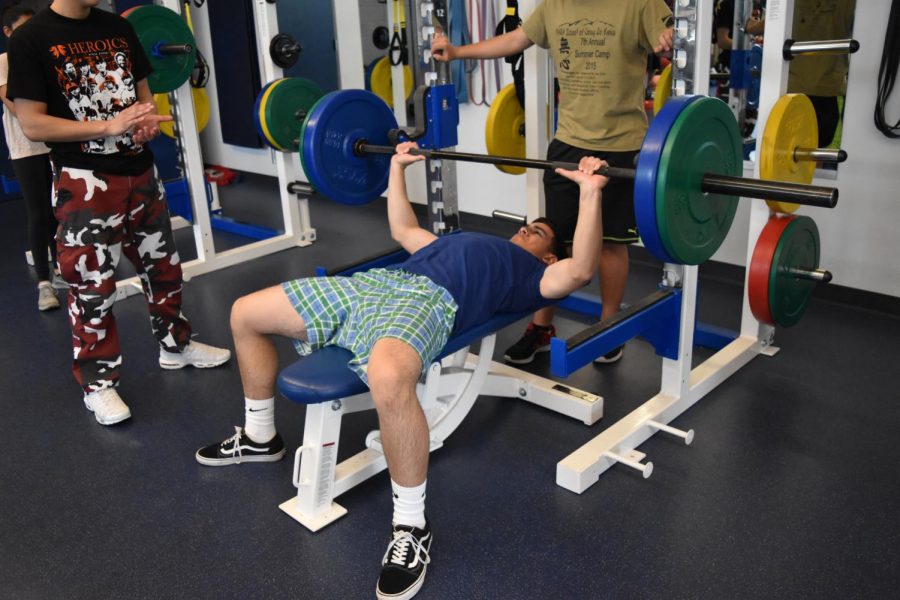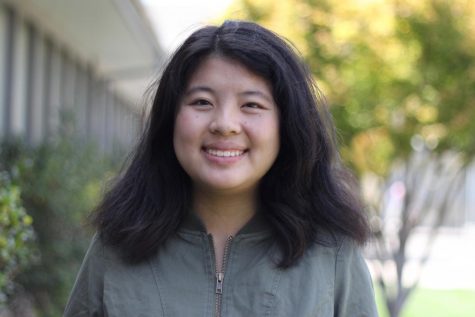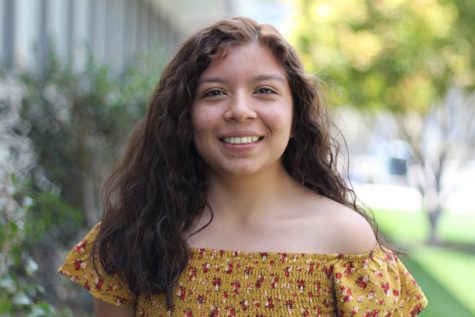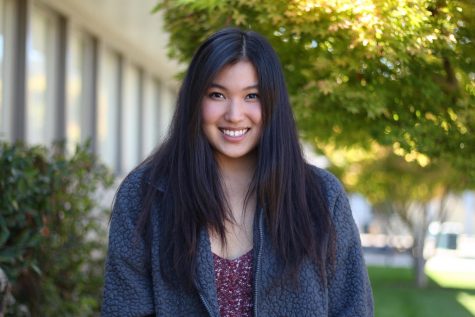Weight Lifting Club Flexes on the Haters
March 24, 2018
When sophomore Shilpa Rao first attended a LiftLAHS meeting, she squatted 145 pounds — a feat she thought only male, bodybuilding-obsessed athletes could accomplish. Three meetings later, she was able to squat her personal best of 160 pounds with the help of the experienced lifters at the club.
“I was terrified [of joining] because I thought [the club] was full of guys that could literally deadlift 400 pounds,” Shilpa said. “I was scared of being judged [if I couldn’t] lift, [but] what’s really cool about the club is that they’ve managed to turn a sport into a community.”
President and junior Gurshaan Arora and Vice Presidents junior Will Schubert and sophomore Jiayan Luo started LiftLAHS last September with the goal of changing weightlifting stereotypes perpetuated by pop culture. All three had experience in weightlifting and attended the gym regularly before they created the club.
LiftLAHS aims to tackle the brawn over brain, bodybuilder persona that most people associate with the sport while creating a supportive community for both experienced and novice lifters.
“When we first started the club, we got a lot of hate,” Gurshaan said. “People were making jokes about the club, [saying] that we were a bunch of dumb guys that were going to lift. [But] it’s more [about] helping people get on track with their fitness goals, regardless of what condition they’re in. There’s a lot more than just brawn.”
Experienced members approach teaching in specific stages, starting novice lifters with bodyweight squats and transitioning them from a PVC pipe to a 45 pound bar. From there, weights of 10 or 25 pounds are added. Lifters are taught how to correct common issues with form, such as deepening the bend of their knees or preventing their legs from caving in.
“There’s a difference between knowing how to lift and teaching people how to lift,” Jiayan said. “What may be intuitive for you may not be as intuitive to other people. It might seem super familiar to you because it’s your own body, but for others, it’s a new movement, and it’s challenging to teach it so someone else can understand.”
As part of their efforts to disprove common stereotypes, the club has worked to increase diversity, specifically recruiting females through word-of-mouth recruiting and encouraging other athletes to try the sport as a supplementary exercise.
Still, while the club has gotten females to attend meetings, they’ve experienced low retention rates. Shilpa is the only female out of 20 members who attends the club regularly, mostly to supplement the competitive swimming she does outside of school. She’s observed that among female athletes, lifting is less popular because of its perceived status as a male-only sport and the stereotypes associated with it.
“I’m the only girl in the club, [and] I think a lot of girls are afraid of it,” Shilpa said. “Lifting is not seen as a very feminine sport and it is very male-dominated, but [that is] a stigma that surrounds lifting that people should let go of. Athletes at our school could benefit from it.”
Another misconception the club hopes to eliminate is the belief that the sport isn’t academic and only involves lifting as many weights as possible. The club officers have experience with specific diets and research on proper form — information they’ve learned from books and the Internet — and aim to incorporate their knowledge into their weekly meetings. Over the past decade, professional weightlifters have shifted away from trial-and-error methods to science-based approaches.
“[I used to think] there was a clear distinction between sport and school and they [didn’t] mix well,” Jiayan said. “With lifting, it’s actually super academic. People are dedicated to the physics of lifting, [and] there’s a lot of research on different types of diets [and] optimal protein intake.”
While only Will, Jiayan and sophomore Eric Carlson follow optimized diets for their workouts, the club aims to provide an introduction to lifting and wants new members to change their lifestyles one step at a time, starting from working out regularly to implementing a new diet.
In the future, the club wants its members to set concrete goals for themselves to keep them motivated — a key way to help new lifters maintain a workout schedule and improve retention rates.
“Meetings are really free right now, and people can do whatever they want to [because] there are no goals,” Jiayan said. “It’s hard to find motivation and purpose, especially if you’re new to lifting, so we want to implement competitions, challenges, records [and] things to work toward.”
And, according to Shilpa, the biggest barrier to females joining the club is their perceptions of their own strength.
“A lot of times when I ask my [female] friends to come, their main point is that they don’t think they’re strong enough,” Shilpa said. “If we somehow broke down the idea that you have to be buff and strong to begin with to lift, more girls would want to join.”
LiftLAHS meets in the Fitness Center on Thursdays at lunch.






